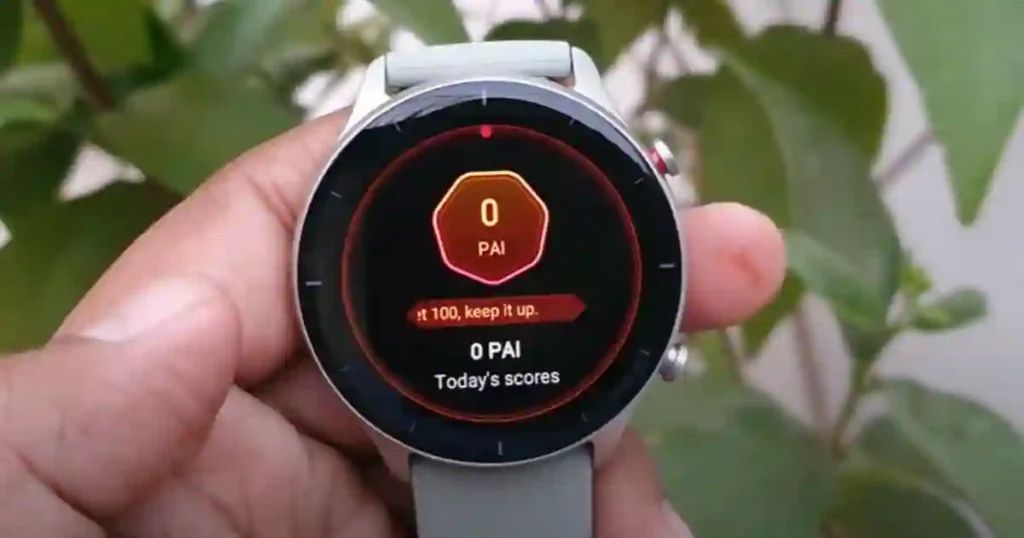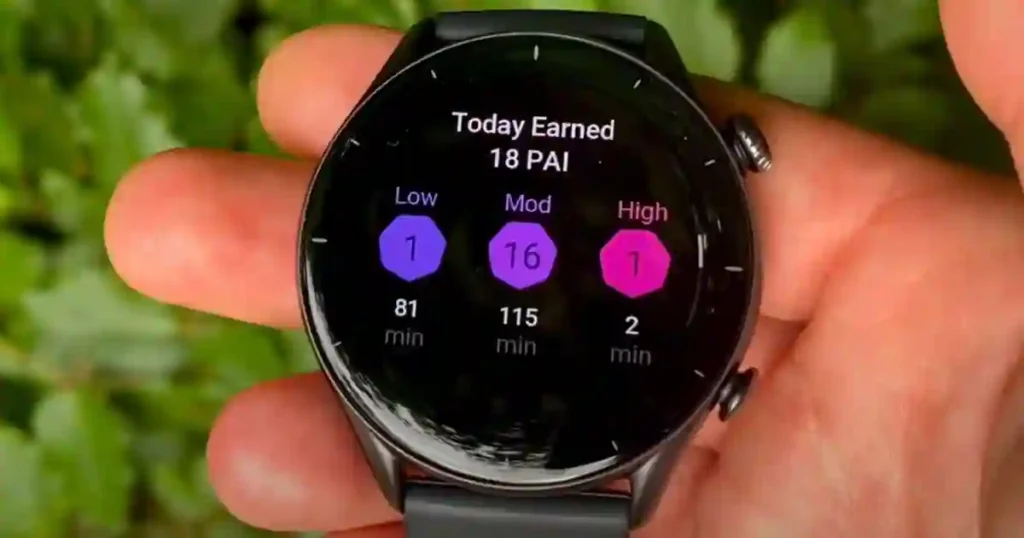If you’ve ever opened your Amazfit watch or the Zepp app and spotted something called PAI, you’re probably wondering:
“What’s a PAI score, and why should I care about it?”
You’re not alone. A lot of users (even longtime Amazfit fans) have no clue what this little number means.
But here’s the thing:
PAI (Personal Activity Intelligence) isn’t just another fitness stat. It’s actually one of the most powerful—and underused—features your Amazfit watch offers.
In this guide, I’m going to walk you through it all in a way that makes sense. You’ll learn:
- What is the Amazfit PAI score?
- Why does it matter for your health?
- How do you earn more PAI?
- And why it might be even better than counting steps.
Let’s make this simple.
What Is Amazfit PAI Score, Really?
PAI stands for Personal Activity Intelligence. It’s a number between 0 and 100+ that shows how active your heart has been over the past 7 days.
So instead of just saying, “You walked 10,000 steps,” your watch asks:
“Did your heart rate get high enough to help your health?”
The idea comes from a real medical study. It showed that people who maintained a PAI score of 100 or more week after week were less likely to have heart disease or other health problems—even if they weren’t working out every single day.
In short: PAI is a heart-focused score. Not a step counter. And that makes it much more meaningful.
Why Is PAI Important for Your Health? 🩺

Here’s what makes PAI different (and kind of awesome):
- It doesn’t care how long your workout is.
- It doesn’t care if you hit 10,000 steps.
- It only cares if your heart rate increases enough to benefit your health.
You can go for a short, brisk walk and earn just as many PAI points as someone who took 15,000 slow steps.
That’s a big deal.
Because for most people, life is busy. We don’t always have time for long workouts.
But with PAI, a few short bursts of activity each week can actually keep you in the healthy range—as long as your heart rate gets moving.
How Is PAI Calculated on Amazfit Watches?
Let’s break this down simply.
Your Amazfit watch measures your heart rate all day. Then it looks at:
- How high your heart rate gets when you move
- How long it stays elevated
- Your age and fitness level
- Your activity over the last 7 days
So if you go for a run or do a quick 20-minute dance session, and your heart rate gets up into a healthy zone, you’ll earn PAI points.
💡 Tip: You can earn a lot of PAI in just 1 or 2 workouts per week if they’re intense enough.
Amazfit PAI vs. Steps: What’s the Difference?
Let’s be honest—most of us have chased the 10,000 steps goal before. But here’s the thing:
| Feature | Step Count | PAI Score |
|---|---|---|
| What it tracks | Steps only | Heart rate-based activity |
| Personalized? | ❌ Same for everyone | ✅ Adjusts based on you |
| Health impact | 🟡 Kind of helps | ✅ Backed by medical research |
| Smart goal | ❌ Not always meaningful | ✅ Focuses on heart health |
So while steps tell you how much you moved, PAI tells you how well you moved.
And in the long run, that’s way more valuable.
What’s a Good PAI Score on Amazfit?
Here’s the target:
🟢 100 PAI or more (over a 7-day period) = Great for your heart!
It’s okay if your daily number changes. The app tracks your rolling 7-day average, so you can take rest days or have busy days without losing progress.
Just aim to stay above 100 most weeks. That’s the magic number.
How to Increase PAI Score on Amazfit: Easy, Real-Life Tips
You don’t need a gym membership or a crazy workout plan.
Here are simple ways to get that score up:
1. Speed up your daily walks
Instead of just strolling, try walking faster for 10–15 minutes.
Your heart rate will climb—and so will your PAI.
2. Use Workout Mode
Start a “Walk,” “Run,” or “Other” workout on your watch.
This tells Amazfit to track your heart rate more closely and award accurate PAI.
3. Climb stairs when you can
Skipping the elevator is a great way to get quick bursts of heart-pumping activity.
4. Dance or do bodyweight workouts
Even 10–15 minutes of jumping jacks, squats, or dancing around your room works.
5. Mix up the intensity
Doing short, intense bursts of activity (like fast intervals during a walk or jog) can earn more PAI than long, slow workouts.
Where to Check Your PAI Score
You can check your current PAI score on:
- Your Amazfit watch home screen (most models show it)
- The Zepp App → Health → PAI section
You’ll see your daily progress, 7-day average, and even tips to improve it.
Who Should Care About Their PAI Score?
Honestly? Everyone.
But especially:
- Beginners: It gives you a simple, smart fitness goal without overwhelming you
- Busy people: You don’t need hours of workouts—just short, quality activity
- Older adults: It’s personalized to your age and health level
- People bored of counting steps: It focuses on meaningful movement
PAI is less about “move more” and more about “move smart.”
Final Thoughts: Why PAI Is Worth Paying Attention To
Look, there are tons of fitness stats out there. But most of them don’t mean much unless you’re super into data.
PAI is different. It’s simple, science-based, and personalized to you.
If you do just one thing with your Amazfit watch, make it this:
Track your PAI, aim for 100, and let the rest take care of itself.
Your future heart will thank you. ❤️
Quick Recap:
- PAI stands for Personal Activity Intelligence
- It tracks your heart rate, not just steps
- 100+ PAI = great for your health
- You can improve it with short, high-quality activity
- It’s simple, smart, and backed by science
Over to You!
Got a PAI score you’re proud of? Or just starting out?
💬 Drop your score or questions in the comments
🔄 Share this with a friend who owns an Amazfit
🏃♂️ And go earn a few PAI points—you’ve got this!
Also See

